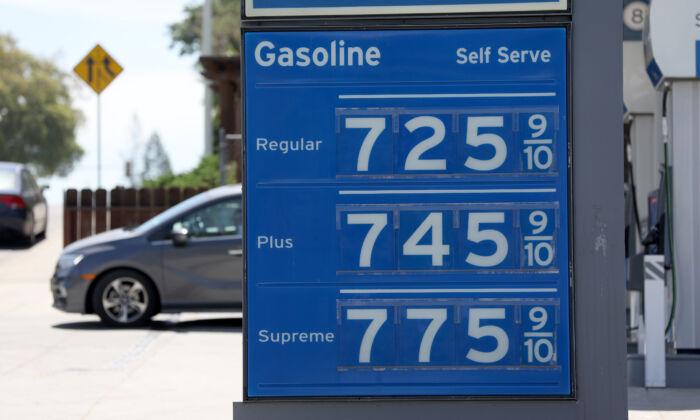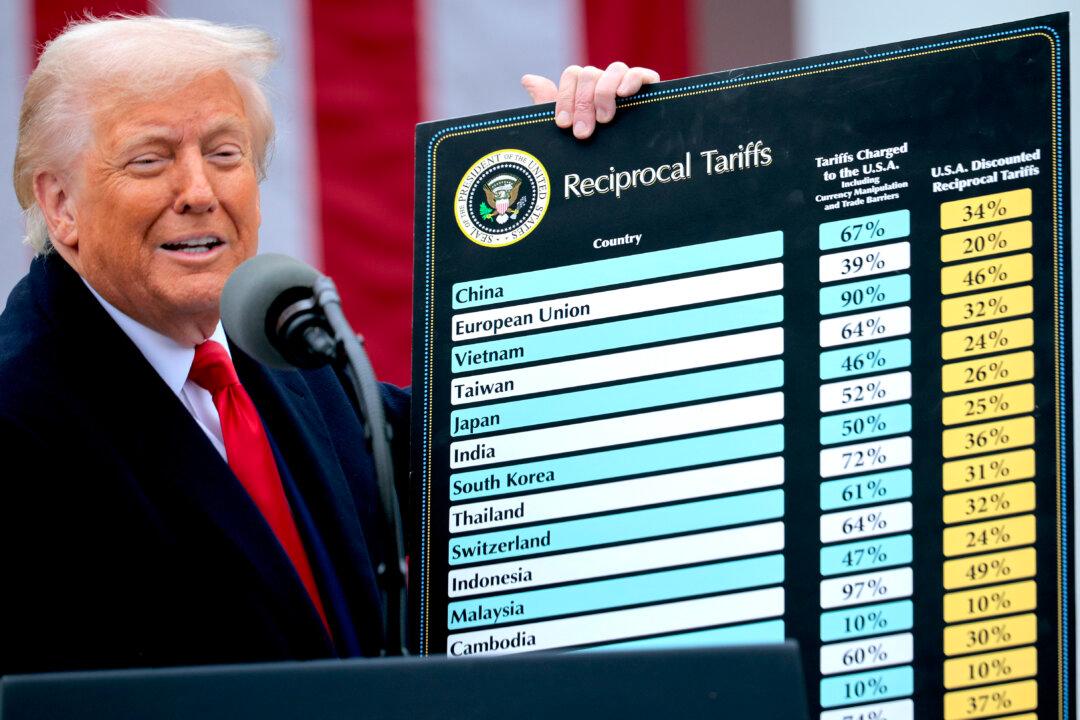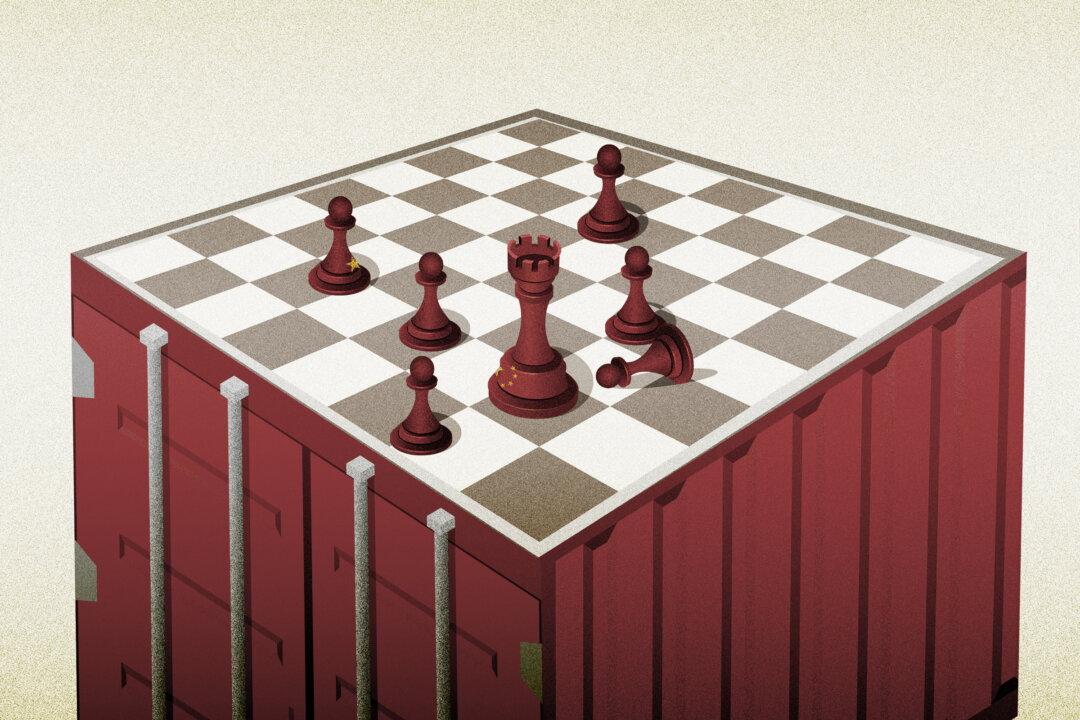Gas prices continue to rise, topping historic highs and there’s no imminent hope of relief in sight, according to sector analysts. The average price for a gallon of regular gasoline in the United States has now more than doubled since President Joe Biden took office.
The legislation grants the president the power to declare an energy emergency for up to 30 days, with the option to extend the declaration.
While the term “unconscionable pricing” could be difficult to pin down, the measure attempts to make it illegal to increase the price of gasoline in a predatory manner.
“So essentially, what this bill would do is, for an unlimited duration, create a system where politicians and bureaucrats can decide what the appropriate level for prices are and fine people,” according to Jack Spencer, senior research fellow for energy and environmental policy at the Heritage Foundation.
Spencer called the measure a recipe for “disaster” during a virtual panel discussion on June 1 hosted by the conservative think tank.
Prices at the pump jumped to a national average of $4.87 per gallon on June 6, according to AAA. In certain parts of California, drivers pay more than $7 per gallon on average.
Many economists of all political stripes are opposed to price controls as a means of curbing inflation. It would repeat mistakes that led to gas lines in the 1970s, they say.
Summers, who served under Presidents Bill Clinton and Barack Obama, accused Democrats of creating “diversionary confusion” and disregarding “real determinants of inflation,” which he said have to do with the inflated demand created by excessive stimulus measures.
Why Are Price Controls Contentious?
After the onset of World War II, President Franklin D. Roosevelt established the Office of Price Administration (OPA) to regulate the pricing of critical goods and impose price controls. The effort, which was backed by famous economists of the time, aimed at curbing price spikes amid mounting wartime demand for critical commodities.Price controls, however, were reintroduced during the Korean War and the Nixon administration.
According to industry analyst Trilby Lundberg of the Lundberg Survey, which monitors prices at gas stations nationwide, there is “great danger” that something comparable to the 1970s controls may reappear in 2022.
“When President Nixon instituted price controls in 1971, they were only supposed to last 90 days. Instead they lasted for nearly 10 years,” Lundberg wrote in a recent note to clients. “At the time, price controls were popular with the public which was getting clobbered by price inflation.”
“When you have binding price controls, you get shortages. And the shortages manifested themselves as gas lines,” David Kreutzer, senior economist at the Institute for Energy Research remarked at the Heritage panel.
There were stories of people waiting hours, which was not unusual, he added, “I waited in the line almost three hours one time.”
Lundberg disproves the myth that the gasoline shortage in the 1970s was caused by the Arab oil embargo. Government rules such as “oil price ceilings, retail margin caps, and allocation schemes,” she highlighted, were the real causes of shortages and long lines at stations.

Why Are Gas Prices Surging?
The real cause of the high gas prices today, according to Kreutzer, is that the current oil supply cannot match the global demand that was disrupted during the pandemic. A part of the increase is also attributed to supply disruption caused by Russia’s invasion of Ukraine, he said.Since his inauguration, President Biden has taken nearly 90 actions, according to Kreutzer’s tally, that have interrupted the domestic supply, including cancellation of the XL pipeline and oil drilling leases, and imposing regulations that make it more expensive to refine petroleum.
Spencer agreed, adding that the growing environmental, social, and governance (ESG) movement also has an impact on the sector. He said that the efforts to defund fossil fuels prevent the essential investments in the oil and gas sector to reduce energy prices.
“We need to stop the war on energy,” Spencer said.
Democrats, on the other hand, claim that fossil fuel executives intentionally keep supplies artificially low in order to juice profits, pointing to the oil sector sitting on over 9,000 granted but unused drilling permits. Biden and the Democrats have repeatedly blamed the oil industry for “price gouging.”
However, oil industry groups have pushed back against the claims that oil companies are sitting on thousands of unused permits.
The group noted that it takes years for certain fields to move from discovery to production partly due to regulatory and legal hurdles, adding that thousands of leases are held up in court by environmental activists.
Lundberg argues that blaming businesses for price gouging is the “first step toward price controls.”
She says if Biden imposes controls, current “eye-popping pump prices would be joined by station outages, closures, and long lines of angry motorists.”
Price controls, according to proponents, have been used in numerous industries throughout U.S. history. There are still price limits in several significant areas, including public utilities, rent, and healthcare.
Debate Grows
In a report last year, the White House Council of Economic Advisers suggested that today’s inflation is best compared to the post-World War II period.“The period right after World War II potentially provides the most relevant case study, as the rapid post-war inflationary episode was caused by the elimination of price controls, supply shortages, and pent-up demand,” the report stated.
Liberal economist and New York Times columnist Paul Krugman criticized the proposal, writing on Twitter in a since-deleted post: “I am not a free-market zealot. But this is truly stupid.”
When asked whether price controls similar to those used in the 1970s might successfully lower U.S. inflation over the next 12 months, 65 percent responded they “disagree” or “strongly disagree.”
In the survey, Harvard professor Oliver Hart said he agreed, but noted, “They could reduce inflation but the consequence would be shortages and rationing.”
“Just stop. Seriously,” Austan Goolsbee, a professor at the University of Chicago and former adviser to President Barack Obama responded to the query.
The survey also found that only 10 percent of economists believed that a key driver behind today’s higher inflation is big corporations in uncompetitive markets using their market dominance to raise prices to juice their profits.





